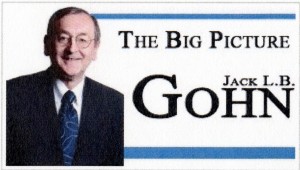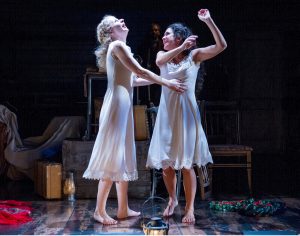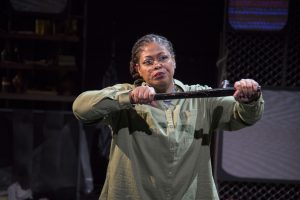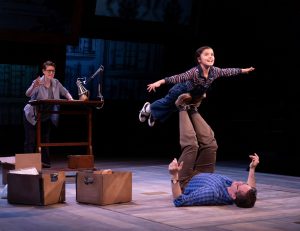Mogadishu Is Here
The Big Picture Home Page | Previous Big Picture Column | Next Big Picture Column
Mogadishu is Here
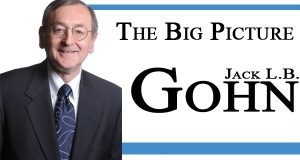
To be published in the Daily Record the week of July 21, 2019
President Trump tweeted about “‘Progressive’ Democrat Congresswomen, who originally came from countries whose governments are a complete and total catastrophe, the worst, most corrupt and inept anywhere in the world (if they even have a functioning government at all) …” The only kernel of truth here was that Congresswoman Ilhan Omar did “originally” emigrate from Somalia as a child, and Somalia at times has been a failed nation; the other three Congresswomen Trump had in mind (Alexandria Ocasio-Cortez, Rashida Tlaib, and Ayanna Pressley) are native-born Americans.
Paradoxically Correct
Nonetheless, though this statement was a mass of disinformation, it was paradoxically mostly still correct. The government of the country where Ocasio-Cortez, Tlaib, and Pressley “originally came from” is “a complete and total catastrophe, the worst, most corrupt and inept anywhere in the world,” just as the President said. That country just happens to be us.
All three branches of government in the home country of Ocasio-Cortez, Tlaib, and Pressley have been rendered unrepresentative and dysfunctional because of corruption. The gerrymandering of congressional districts, a deliberate effort to make them unrepresentative, is widespread; through PACs and direct contributions, big economic players routinely persuade Congress to take actions that are not in the public interest. Congress recently has shown a nihilistic devotion to donors (Big Oil, Big Pharma, Big Assault Rifles, Big Everything), whose financial contributions may or may not be legal, but amount to corruption nonetheless. Nothing else accounts for the way Congress has embraced the donors’ agendas.[1]
Our Supreme Court has for a generation increasingly strayed from the one principle that most guarantees the impartial administration of justice: the rule of stare decisis, the principle that guarantees that judicial decisions do not deviate when there is a change of judges on a court, but remain principled and not result-driven. In one way or another, the Supreme Court has been overruling settled law since it selected George W. Bush as President in contravention of basic federalism principles in 2000 and since it disallowed state regulation of the corruption of our politics by corporate money in Citizens United, in direct contravention of a decision it had itself reached only twenty years earlier. It seems likely that the Court will, in one way or another, accede to most of the efforts of the current administration further to undermine our constitutional balance, including the anticipated overturning of the Roe v. Wade decision, which ought to be untouchable as settled law. This is the worst kind of judicial dysfunction imaginable.
Corrupt, Dysfunctional, and Hollow
The root of the corruption and dysfunction, for the moment, is of course the Executive, which by any rational measure has set new records of that sort. Elected with the possibly indispensable help of foreign meddling and disinformation, the current administration has distinguished itself by the extent of its financial corruption and profiteering from public office. To mention only a few examples: the way our President’s penchant for golf seems to have been paid for by taxpayers to the extent of $340 million; the ongoing way the President profiteers from the favor seekers who stay at his Washington hotel and others; the wasteful travel (and other consumption) engaged in at public expense by six current and former cabinet-level secretaries.[2] More wealth was concentrated in the first cabinet of this administration than in any previous one, and many of the officeholders have no meaningful qualifications for their jobs.
And never in the last hundred years have so many important government ministries been turned over to the interests they are supposed to regulate. We have a coal lobbyist in charge of the EPA, a former telecom general counsel chairing the FCC, aircraft manufacturers vetting the safety of new aircraft (and hence, apparently, setting the stage for the Boeing 737 Max disasters), a longtime foe of unions leading a Labor Department which has been dismantling worker safety and wage protections as fast as it can, a surgeon with no applicable work experience in charge of Housing and Urban Development, kicking people out of government-supported housing as fast as he can, former drug company advisors and lobbyists in charge of the FDA. We have climate change denialists censoring the public statements of the National Oceanographic and Atmospheric Administration. We have an SEC chair, in charge of the regulation of investment banks, who spent his entire career as a legal adviser to the largest Wall Street interests.
These captures of agencies by the industries they theoretically regulate is not the normal change of policy with the change of administration; it is the overturning of policies structurally instilled in the agencies by the congress which legislated them. The only word for such extreme perversion of regulatory mission and structure is dysfunction.
At the same time, in many government offices, no one is in charge, as departments hollow out. In no other administration in modern history have there been so many Senate-confirmed positions unfilled. This comes close to what Trump deplored: having no “functioning government at all.” No vetted and confirmed senior supervision is a recipe for incompetence, negligence, and mischief.
Look No Further
Nor does dysfunction stop at the water’s edge. Internationally we are destroying national security by treating our allies as enemies and our enemies as allies. Our international trade teeters on the edge of tariff-induced chaos. We remain mired in the longest war in American history. And however one feels about immigration, there is nothing to feel good about in the way it is actually administered on our southern border.
In short, there is no need to look to look to Congresswoman Omar’s native Mogadishu; Mogadishu is pretty much here. If the chaos there is more extreme, the chaos here is more consequential because of our size and importance to the world. What President Trump said about us is true.
_______________
[1] Re the way Big Oil donations clear its way in Congress (and elsewhere), see here and here and here. See here for how Big Pharma prevails in Congress (and elsewhere). The structural corruption Big Pharma works in Congress could be seen from the fact that Big Pharma is the biggest contributor to Congress of any industry and has two lobbyists for every member of Congress, which in turn has done nothing appreciable to prevent drugs from being more expensive in the U.S. than anywhere else on earth. The success of the NRA and its allies in blocking most gun control in Congress has been legendary.
[2] Former HHS Secretary Tom Price, former VA Secretary David Shulkin, former EPA Administrator Scott Pruitt, former Secretary of the Interior Ryan Zinke, and current Treasury Secretary Steve Mnuchin.
Copyright (c) Jack L. B. Gohn
The Big Picture Home Page | Previous Big Picture Column | Next Big Picture Column
